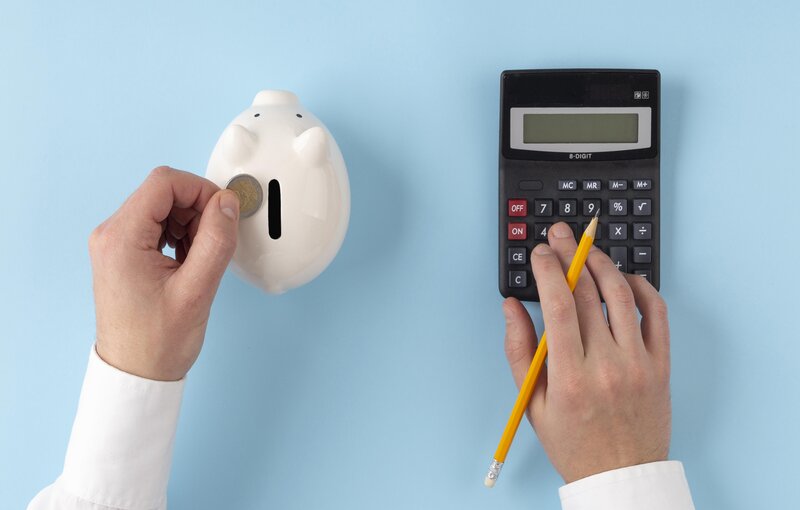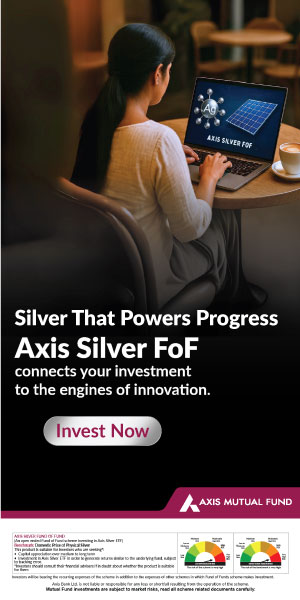Should you invest in passive funds?

Mutual fund investors in India have historically favoured actively managed mutual funds despite exchange traded funds (ETFs) having been around for the last 20 years. But assets under management (AUM) in passive funds have grown at a phenomenal rate over the last few years and ETFs are now the largest mutual fund category (source: AMFI, as on 29th April 2022).
While a very large part of ETF AUM is from institutional investors e.g. EPFO, retail and HNI investments in passive funds have been growing at a past pace. Retail and HNI AUM in passive funds have grown at more than 50% on a year on year (YOY) basis as on 29th April 2022 (source: AMFI).
In this article, we will discuss about passive funds.
What are passive funds?
Passive funds invest in a basket of securities which track a market index e.g. Sensex, Nifty etc. Weights of securities in the fund mirror the weights of the constituents in the index. Unlike actively managed mutual funds, a passive fund does not aim to beat the market. In other words, passive funds give market returns subject to tracking error. Apart from tracking market indices, some passive funds track prices of commodities e.g. Gold, Silver.
Types of passive funds
There are two types of passive funds – Exchange Traded Funds (ETFs) and Index Funds. Both ETFs and index funds track a benchmark index. The total expense ratios (TERs) of ETFs and index funds are much lower than TERs. While ETFs and index funds are very similar in many respects, there are there are important differences which you should understand:-
- You need to have Demat and trading accounts to invest in ETFs. Index funds are mutual fund schemes. You do not need demat account to invest in index funds.
- After the New Fund Offer (NFO) period, you can buy / sell ETFs only on stock exchanges through your stockbroker, unless you are buying / selling in lot sizes specified by the Asset Management Company (AMC). You can invest in index funds or redeem them with the AMC either directly or through your financial advisor.
- ETF transactions take place at market prices; market prices may be higher or lower than the Net Asset Value (NAV) depending on market conditions. Index Fund transactions take place based on the end of day NAVs, just like any other mutual fund scheme.
- Dividends paid by stocks in an ETF are reinvested in the fund. Dividends received by index funds can be paid out to you or re-invested in the fund depending on the option (growth or IDCW or IDCW Reinvestment) chosen by you.
- TERs of ETFs are lower than those of index funds.
- You can invest in index funds through Systematic Investment Plans (SIPs). The traditional SIP route of investments is not available for ETFs. However some stock brokers provide “SIP like” facilities for investments in ETFs. Check with your stock broker if they provide SIP facilities for ETFs.
Suggested reading: How SIP works for investors in any life stage
Benefits of passive funds
- Low cost: Expense ratios (TER) of passive funds are much lower than actively managed funds. The fund manager of an active fund will have to generate significant alphas on a consistent basis to match the performance of a passive fund tracking the same benchmark index. Suppose the TER of an active fund is 2%, while that of a passive fund tracking the same benchmark index is 0.25%. This difference in costs implies that the active fund will have to consistently beat the benchmark by at least 1.75% to match the performance of the passive fund. Over long investment horizons, lower costs may result in considerably higher returns due to the compounding effect.
- No unsystematic risk: In order to beat the index (create alpha), the fund manager of an active fund will have to be overweight or underweight on certain stocks in the index. This will result in unsystematic i.e. stock or sector specific risks. While unsystematic risk can lead to outperformance, it can also result in underperformance. Unsystematic risk is an additional risk in investment over and above market risks. There is no unsystematic risk in passive funds. Passive funds are only subject to market risks.
- No human biases: Fund managers may have human biases which may reflect of fund performance. Moreover, the fund manager of an active fund can change for a variety of reasons, other than performance. This can affect the returns of the fund. There is very little human bias in passive investing.
Things to consider in passive investments
- Tracking errors: Tracking error is the deviation of the fund’s returns from the benchmark index return. There are a number of factors that can give rise to tracking errors. The most important one is the TER of the passive fund. Higher the TER, higher will be the tracking error. The percentage of fund assets held in cash or cash equivalents can also give rise to tracking errors. Finally, delay in executing buying or selling of securities can also give rise to tracking errors. You should select passive schemes with low tracking errors.
- Total Expense Ratio: Total expense ratio (TER) of a mutual fund scheme is the cost of managing and operating the scheme on a per unit basis. It is calculated by dividing the total expenses of the fund with the assets under management (AUM). TER is very important in mutual fund investments because it directly impacts the returns of the scheme. For the same level of performance of the underlying portfolio, a scheme with lower TER will deliver higher returns compared to a scheme with higher TER. You should always select passive schemes with low TERs.
- Liquidity: Liquidity is an important factor in selecting ETFs because you will have to sell your ETF units in the stock exchanges, unless you are redeeming in lot sizes (creation units) as specified by the AMC. In other words, you need to have buyers when you want to sell your ETF units in the stock market. Though AMCs appoint market makers to ensure adequate liquidity for their ETFs in the exchanges, if your ETF does not have sufficiently high liquidity, you may be forced to sell your ETF units at price significantly lower than the NAV, in extreme market conditions. How will you know if your ETF has high or low liquidity? Check the average daily trading volumes of the ETF in the stock exchange and compare it with similar ETFs. You will find data of daily trading volumes of ETFs in the websites of the stock exchanges e.g. NSE, BSE.
Who should invest in passive funds?
- Investors who want market returns, not higher than market returns.
- Investors who do not want unsystematic risks e.g. stock or sector specific risks.
- Investors should have Demat and trading accounts for investing in ETFs.
- Investors who do not have Demat and trading accounts can invest in index funds.
- You should have long investment horizons for ETFs unless you are investing in target maturity ETFs with defined maturity dates.
- Different types of passive funds (e.g. Nifty, Bank Nifty, fixed income ETFs, Gold ETFs etc) have different risk profiles. You should always invest according to your risk appetite and financial goals.
You should consult with your financial advisor before investing.
Mutual Fund Investments are subject to market risk, read all scheme related documents carefully.
Axis Mutual Fund launched its first scheme in October 2009 Since then Axis Mutual fund has grown strongly. We attribute our success thus far to our 3 founding principles - Long term wealth creation, Outside in (Customer) view and Long term relationship. Come join our growing family of investors and give shape to your desires.
Quick Links
Other Links
Follow Axis MF
POST A QUERY






